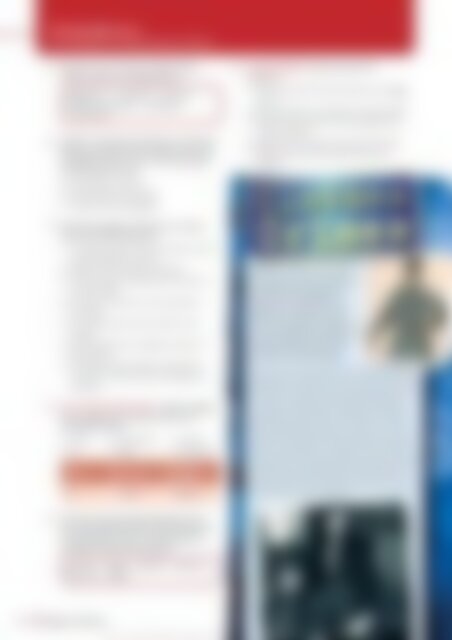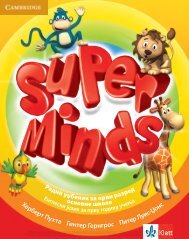Енглески језик 8, уџбеник, старо издање, Нови Логос
- No tags were found...
You also want an ePaper? Increase the reach of your titles
YUMPU automatically turns print PDFs into web optimized ePapers that Google loves.
READING Fashion<br />
I can understand a text about attitudes to fashion.<br />
1 Read the words in the box. Which of the<br />
clothes can you see in the pictures?<br />
baggy jeans a miniskirt a top hat<br />
a hooded sweatshirt underwear<br />
a suit and tie<br />
2 2.23 Read the title of the text and look at<br />
the pictures. What do you think the text will<br />
be about? Choose a, b or c. Then read, listen<br />
and check your answer.<br />
a Fashionable criminals.<br />
b Clothes that shock people.<br />
c Famous fashion designers.<br />
3 Read the text again and write true or false.<br />
Correct the false statements.<br />
1 It’s always people, not their clothes, which<br />
provoke negative reactions.<br />
2 People were scared by the top hat.<br />
3 Trousers weren’t usually worn by women<br />
until the 1960s.<br />
4 All skirts and trousers were accepted in<br />
the 1960s.<br />
5 The author thinks that it’s bad to wear<br />
hoodies.<br />
6 Some people have a negative opinion of<br />
hip hop fans.<br />
7 The author thinks that we should look<br />
at people’s clothes before we judge their<br />
character.<br />
4 BUILD YOUR VOCABULARY Find the negative<br />
form of adjectives 1–6 in the text. Then<br />
complete the table.<br />
1 moral 3 responsible 5 decent<br />
2 fair 4 legal 6 respectful<br />
Prefix<br />
<br />
Negative<br />
<br />
im- moral immoral<br />
6 YOUR OPINIONS Ask and answer the<br />
questions.<br />
1 What do you think about hoodies and baggy<br />
jeans?<br />
2 Are any fashions shocking these days? Why?<br />
3 What do you think of the way people dress<br />
in your country?<br />
4 What kind of clothes do you like wearing?<br />
5 What do your parents think about your<br />
clothes?<br />
Clothes can be comfortable<br />
and casual, smart and stylish,<br />
or colourful and eccentric.<br />
That’s fine, but beware if<br />
what you’re wearing is too<br />
different or daring. It isn’t<br />
your personality or opinions,<br />
but your appearance that can<br />
cause disapproval. Clothes,<br />
it seems, can sometimes<br />
provoke a strong reaction.<br />
There are many examples of clothes which have<br />
attracted the attention of the law. The inventor of<br />
the top hat, for example, was arrested in London<br />
in 1797 for wearing ‘a tall structure calculated<br />
to frighten timid people’. People screamed and<br />
panicked when they saw it. Women have also<br />
caused controversy with their clothes. In 1926,<br />
the actress Marlene Dietrich wore a man’s suit<br />
and tie in Paris and was warned that her clothes<br />
were causing offence. It wasn’t until the sixties<br />
that trousers were accepted as part of a woman’s<br />
wardrobe, even though women of all ages wear<br />
trousers these days. Miniskirts caused similar<br />
shock waves in the sixties because some people<br />
thought they were ‘immoral’.<br />
5 Check the meaning of the adjectives in the<br />
box. Add negative prefixes and include them<br />
in the table in exercise 4. Then think of an<br />
example sentence for each word.<br />
common regular possible sensitive<br />
organized legible<br />
50 Image and identity<br />
Property of Oxford University Press. Provided for and restricted to creating acc<br />
ccess<br />
essibl<br />
e<br />
for<br />
mats for<br />
use<br />
rs wit<br />
th a dis<br />
abili<br />
lit<br />
ty.

















